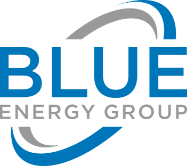Energy Service Companies (ESCOs) and other performance contractors of government-owned buildings are eligible to claim Section 179D federal tax deductions for their work designing energy efficient buildings. Our team is ready to partner with you to secure these tax deductions. Additionally, we are able to help your public and non-profit clients secure their Investment Tax Credits through the direct pay provision.
Section 179D Tax Deductions
ESCOs and design-build contractors are allowed a 179D tax deduction of up to up to $5.00 (plus inflation adjustments) per square foot of building space in buildings owned by public and non-profit entities. These entities can allocate the 179D tax deduction to the designer of the energy efficient system. Essentially the design firm takes the tax deduction in lieu of the government or non-profit owner, who does not pay taxes. This could provide significant tax benefits to an ESCO who has these clients owning “green” building projects, including public and private universities, public and private k-12 schools, airports, courthouses, churches, and other publicly-owned buildings.
Because the 179D deduction is a permanent part of the tax code, this deduction applies to qualifying projects placed in service since Jan. 1, 2006. Projects completed in these prior years may qualify designers for tax refunds by amending up to three years of past tax returns. Before a designer may claim the 179D tax deduction, with respect to property installed on or in a building owned by a non-tax-paying entity, the designer must obtain the written allocation from the “authorized representative” of the building owner. In cases where there is more than one designer, the owner may either allocate the deduction to the primary designer, or, at the owner’s discretion, allocate the deduction amongst all of the designers.
Designers under the Section 179D guidelines includes an “architect, engineer, contractor, environmental consultant, or energy services provider who creates the technical specifications for a new building or an addition to an existing building that incorporates energy efficient commercial building property.” This definition does not include someone that merely installs, repairs, or maintains the property. Under this definition, ESCOs generally qualify as a designer.
Federal agencies that have established policy regarding the allocation of the 179D deduction include the Department of Defense and the General Services Administration. These policies guide project managers in understanding to whom the deduction should be allocated and the standard approach in allocating the deduction. Some state agencies also have established state-wide policy regarding this allocation, including North Carolina and Texas.
Investment Tax Credits
Previously, governmental entities and non-profit organizations could not directly benefit from tax credits generated from the ownership or operations of renewable energy facilities. The Inflation Reduction Act (IRA) established a mechanism for these types of entities to directly receive energy tax credits in the form of an elective payment—often referred to as direct pay.
An eligible entity that qualifies for a clean-energy tax credit, like a non-profit church, public university, or local government agency can notify the IRS that they intend to claim the credit and file an annual tax return to claim direct pay for the credit’s full value. The IRS would then pay the value of the credit to that entity. The IRA has transformed the tax credit landscape by offering these direct payments to public and non-profit building owners through a cash refund from the IRS.
